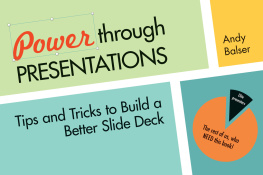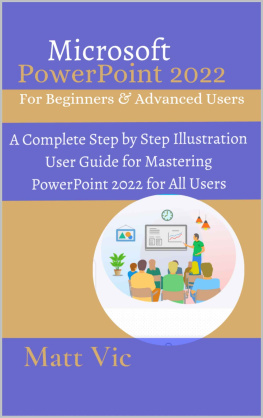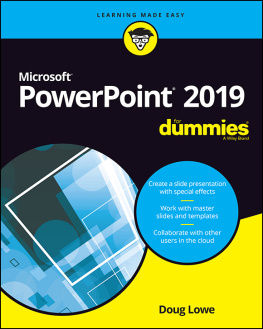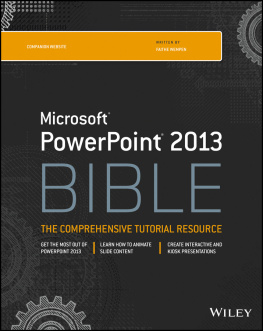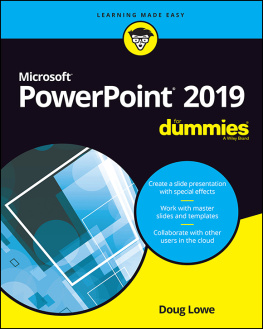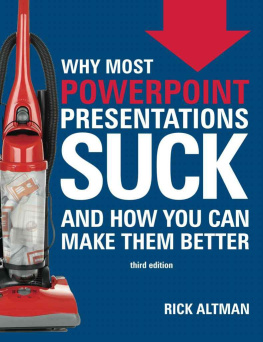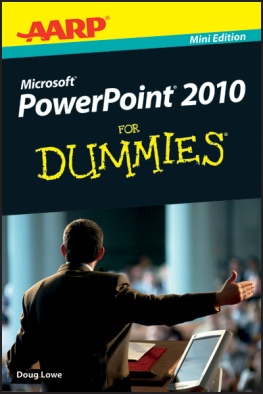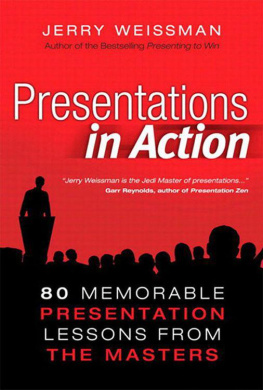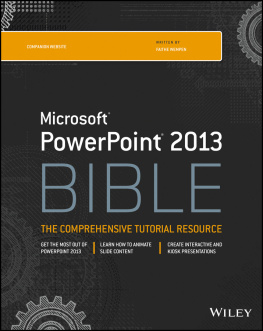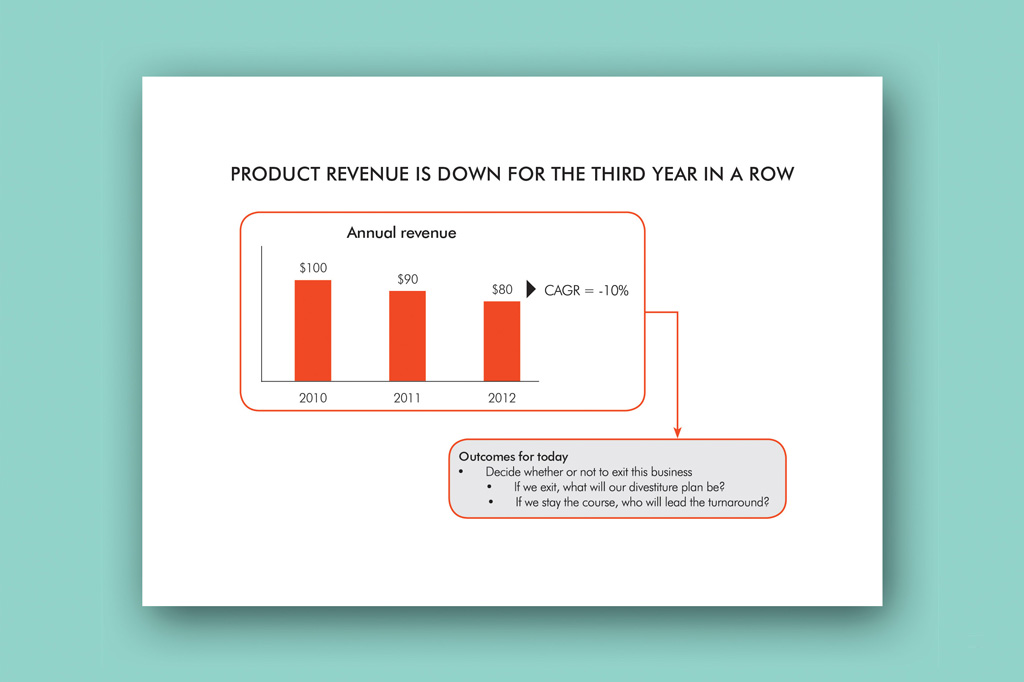This book was created just for you. Youre not an elite presenter whos about to take the stage and call the world to action. Youre a regular Joe or Jill who just needs a few slides you can review with co-workers. And half the time youre not even there in person, so youre either presenting over the phone or youve emailed the slide deck.
This book came to be because most other books about making PowerPoint presentations are aimed at the presenter whos standing in front of a large audience, going on about some grand idea. And while these books have some great tips, they dont really hit the mark for the rest of us. With all the stuff youre expected to deliver on any given day, is making pretty slides even important? Yes, for two reasons:
This book offers some everyday tips, tricks, and templates for making great slides. At a minimum, youll make slides that suck less than they do now.
Heres how to tell. The facing page shows what a lot of those other books might try to teach you about building slides. It features a Zen-like minimalism, imagery that complements the message, and a bunch of other stuff you probably dont want to spend time reading about.
If presenting something like this at work would get you a response to the effect of, Thats great, hippie, now tell me why your project has gone off the rails, then this book is for you.
Choosing what to use
DONT BE A DUMB-ASS, ONLY PRESENT WHAT YOUR AUDIENCE NEEDS
Lets be clear about one thing: the people youre making the slides for arent there to see, hear, or read about you. They just need to get information quickly and clearly. It doesnt really matter whether its you delivering it or youve trained a talking donkey to do it.
If you take nothing else away from this book, take this: you must understand exactly what your audience needs to know and then let that be your guide in choosing what to include on your slides. If you find yourself thinking, But I spent 50 hours analyzing the last three years of sales data and they should know how hard that was, then give yourself a shake and refocus. The only thing youre there to do is address what your audience needs. If that analysis is on target, thats great, its in. If it doesnt help you deliver what your audience needs, then too bad, its out. Creating a presentation is a bit like carving a stone sculpture. Try not to get too hung up on the big chunks of rock that are falling to the floor; just make sure the end result is great.
So, right off the bat, figure out why youre there. It could be for a number of reasons, such as:
- They need an update on the status of my project;
- We need to make a decision;
- I need to convince them to do something.
Consider starting your presentation by telling everyone exactly what you want them to walk away with. This will ground their thought processes so that, as you go through your material, you build toward an established goal. Heres a quick example:
If you were a sniper, the gray box at the bottom of this slide would be your crosshairs. Any material that doesnt directly help answer these questions should not appear in your presentation.
So how can you develop the crosshairs for your presentation? Start by asking yourself (and others) questions about who your audience is, what decisions your presentation might help them make, and what else they do when theyre not taking in a riveting presentation by you. You can approach these questions in a similar way by asking yourself what you want people to think when they see your material, how you want them to feel about it, and what you want them to do once its all over. Use your answers to come up with the two or three outcomes that your presentation needs to accomplish (i.e., your crosshairs). Since youre a clever person, you can probably come up with your own list of questions, but here are a few examples to get you started:
- Why does each person want to see/read my presentation?
- What decisions will my information help them make?
- What are some of my audiences preconceived notions, which I might need to overcome?
- Are audience members involved with other projects that might be affected by my project or knowledge?
- How does each persons job performance get measured at the end of the year? How can my presentation help others meet their performance targets?
- Who will be the most likely person to raise questions? Is there anything that I can include to help anticipate questions? Can I send this person anything beforehand to avoid being taken off track?
- What are the companys or teams biggest priorities? What parts of my initiative link to these?
Theres a reason that everyone isnt the CEO
As youre plotting and scheming to develop a great presentation, it might help to keep in mind what part of the corporate ladder youre developing slides for. Different levels typically have different needs. Each situation will vary, but here are a couple of examples of the types of concerns some of these different groups might have:
Frontline
- How does this help me do my job better?
- Does this help me understand the bigger picture?
Middle management
- How will this impact my team?
- Does it inform any decisions I might have to make?
- Does this keep me aware of things that are important to the company?
Senior management
- How does this help me make investment decisions?
- How will this differentiate us in the market?
- What impact will this have on financials and shareholder value?
Sorry, baby, its not you. Its me.
Theres a good reason that your company pays you the bags and bags of money it does. Its because you know stuff. Probably a lot of stuff. However, the audience isnt there to be in awe of all the wonderful things you know. Yet going on and on about the stuff we know is one of the most common traps that we fall into when putting a presentation together. Breaking your emotional attachment to the work youve put into something or the expertise youve developed is one of the best ways you can improve your presentations. Dont worry about trying to show that youre the smartest kid in the class or that youre the hardest working bee in the hive. If you deliver what your audience needs, the rest will shine through. So as emotionally attached as you might feel to some of your work, detaching yourself will help you build a stronger focus on your audience.

